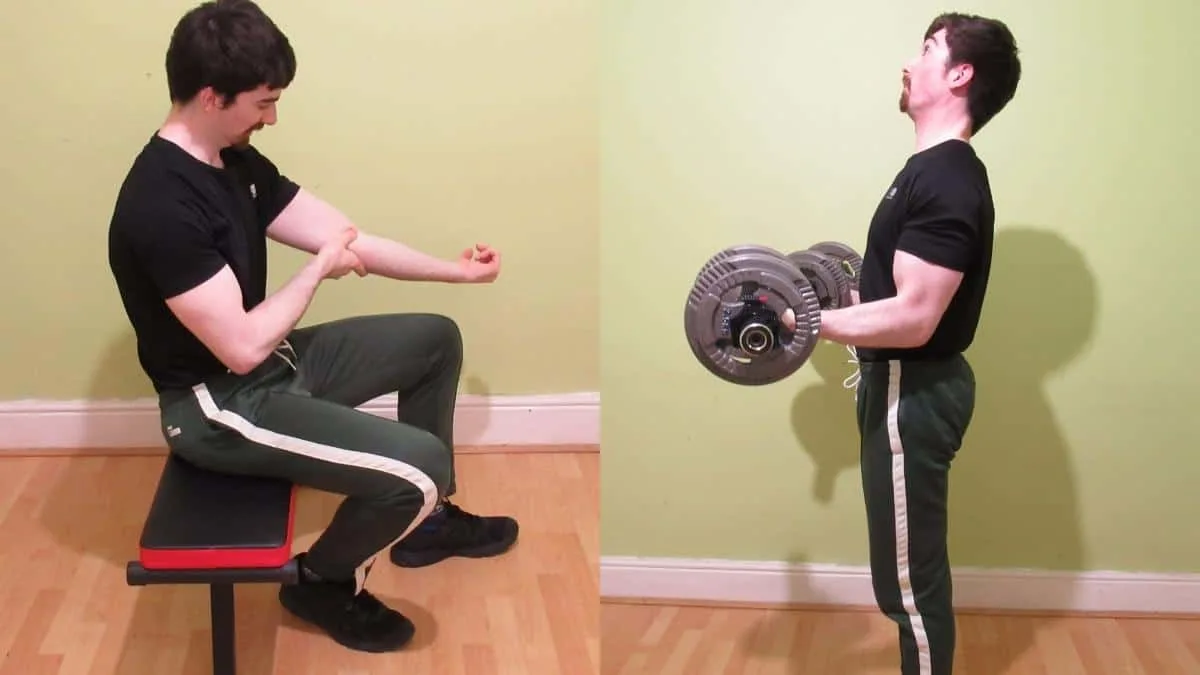Barbell curls have never been kind to my forearm muscles. In fact, if it were down to me, I’d rename the exercise forearm pain curls. As much as curling heavy barbells is a great mass-building activity for the biceps, it’s simultaneously a horrific nightmare for your forearm flexors.
That said, there are some individuals (generally those with larger frames) who can get away with doing these “forearm pain bicep curls.” But chances are because you’re reading this article, you’re not one of the lucky few.
But don’t worry, you won’t be doomed to puny arms, nor will you have to completely get rid of barbells from your training program. Instead, you’ll quickly learn about some critical form modifications that can reduce and eliminate your forearm pain after curls.
Related posts: brachioradialis pain after lifting │forearm hurts when lifting
Why do we get forearm pain when curling?
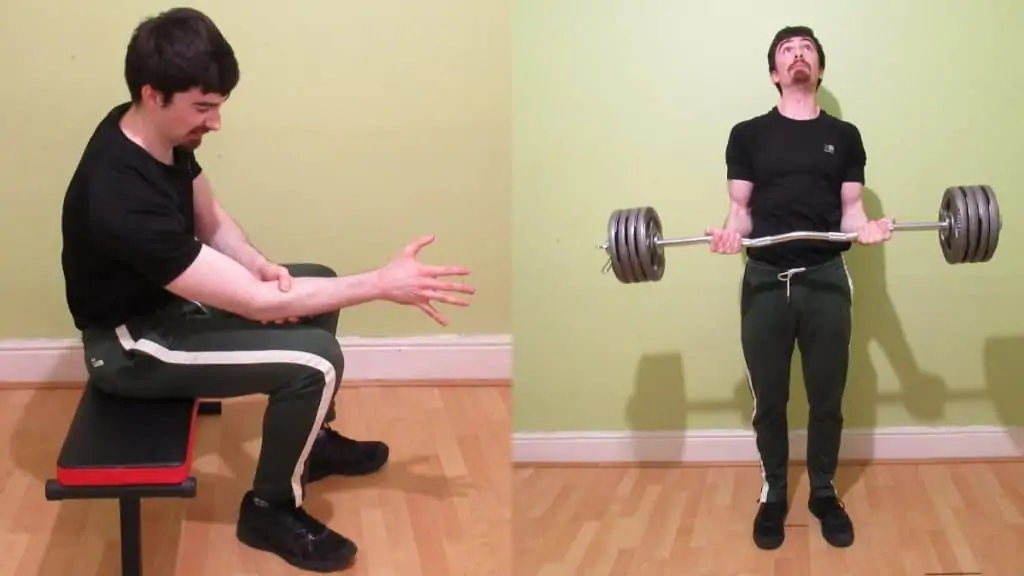
If you have forearm pain when doing bicep curls, there’s a good chance that your lifting technique is imperfect. Most likely, your forearms are flexed too much as you’re curling the barbell.
To be clear, by too flexed, I mean that your hands and wrists are flexed towards to the underside of your forearms. This type of form naturally engages your forearm flexors and makes them do a lot of the heavy lifting, which in an ideal world should be mostly reserved for your bigger, stronger biceps.
Add this to the common gym bro training technique known as ego lifting, and you have a recipe for forearm pain during curls and post-workout forearm cramp. The solution?
Learn to do barbell curls with perfect form. This is to say, keep your wrists in a neutral position (even better, slightly extended) and control the weight at every moment during the rep with your biceps.
Another cause of your forearm pain when doing curls could be a more severe underlying injury. This is why I always stress the importance of seeing a doctor if Rest, Ice, Compression, and Elevation (RICE) doesn’t eliminate your painful symptoms.
It might well be that curls are simply the exercise that brings out those underlying symptoms. In other words, you might have had the injury for a while, but besides curling, no other activity has been able to bring that latent pain to the surface.
See also: forearm pain when typing │forearm pain due to gaming
What to do if your forearm hurts when curling
First and foremost, stop curling. You don’t want to turn what is most likely a small sprain into a full-blown chronic pathology.
Rest, Ice, Compression, Elevation
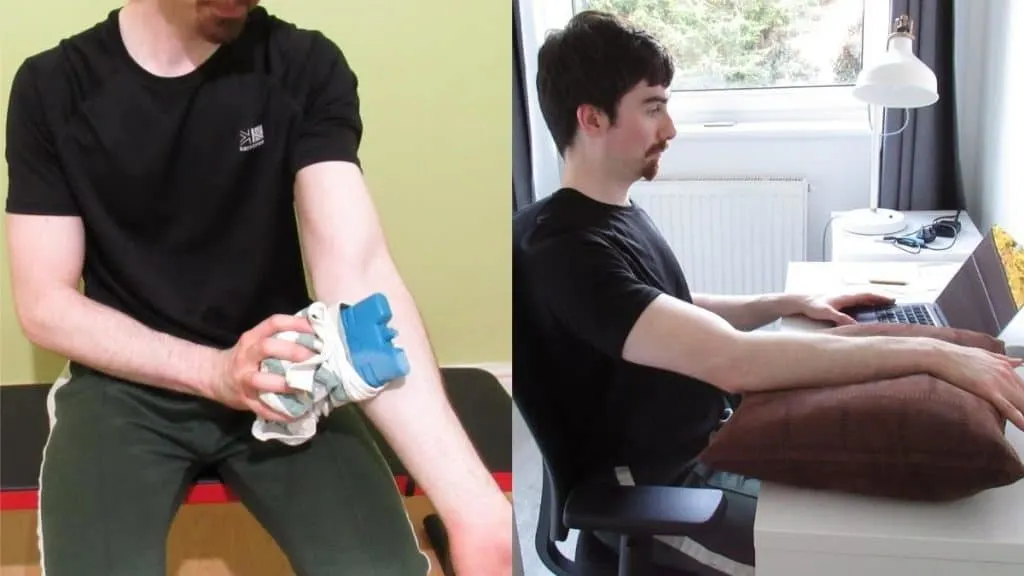
RICE can be used to treat a multitude of sporting injuries. So if you’re getting forearm pain from curls, then rest should be your first port of all. This will help most forearm muscle strains that aren’t overly serious.
If your ego can take it, I recommend taking at least 1-2 weeks off all lifting because this is a major cause of forearm shin splints.
You can still do cardio as long as it doesn’t involve your arms (no rowing machine, sorry), but do the absolute best that you can to give your arms a well-deserved break.
If things are particularly bad, your doctor or physical therapist might suggest that you wear some kind of lower arm protection device to prevent you from using the limb when you shouldn’t.
Also, ice the painful area 1-2 times an hour, especially in the hours and days following the initial pain. If your problem is, in fact, tendonitis, then icing the affected area will help to reduce the swelling that often accompanies this condition while also keeping the pain lower than it otherwise would be.
From there, you can wear a medical bandage around the arm to promote better blood flow to the damaged muscle tissue, tendons, and ligaments. Just be sure to keep the fitting fairly loose. You obviously want some compression, but you most certainly don’t want to cut off your blood supply.
Finally, keep your arm elevated some of the time. You don’t need to completely abandon your daily life to focus on healing this injury. But where possible, aim to maintain an elevated arm position. Some slight elevation is just fine here.
More pain posts: forearm pain from pull ups │forearm rehab exercises
Audit your form
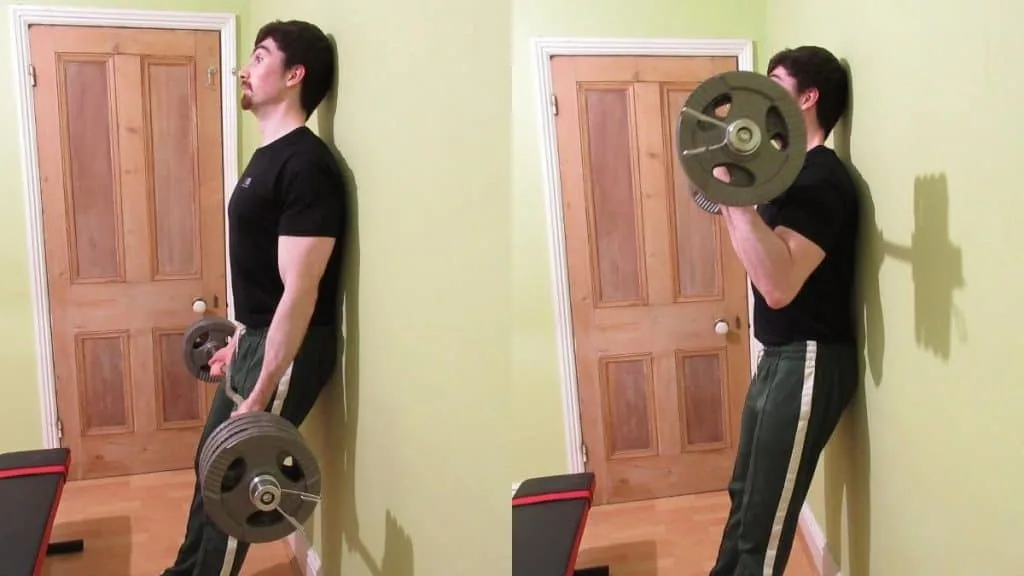
If you have forearm pain when curling, then there’s a good chance that your form is, at the very least, a contributor to the problem.
Are you extending your lower back to complete that last rep?
Are you using your hips and legs to get the bar moving?
Perhaps you’re swinging your shoulders to hoist the barbell up?
This advice is somewhat ironic considering that I was a serious ego lifter on curls as a teenager, but the truth still applies: Train your biceps, not your ego.
Initiate every single rep with your biceps. Now, I’m not saying that your front delts can’t move a mere centimeter. Still, you should aim to do 99% of the lifting with your biceps.
Also, if you can’t lower the weight slowly on the way down, then the weight is too heavy for you. Just to be clear, I’m not saying to purposefully slow down every eccentric. Rather, I’m advising you to slow down one rep to see if your current weight is too heavy for you.
Perfect your form, rest up, and you might well eliminate your upper forearm pain when curling. Also, learn how to stretch your forearm to relieve your tight forearm muscles after training. This can get rid of toxins and lactic acid, as can using a foam roller on the various forearm trigger points, which you can identify via self-massage.
Use an EZ bar
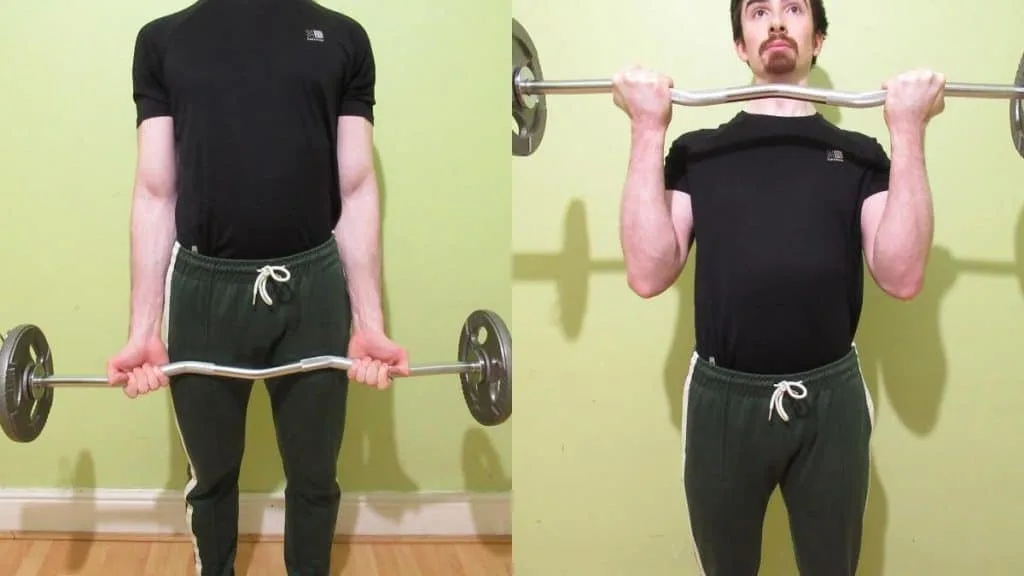
If your forearm hurts when curling, then that pain is most likely coming from the flexors, which reside on the underside of your forearms. And while curling with an EZ bar won’t save your flexors from stress, it will put your arms in a semi-supinated (rather than fully supinated) position.
This naturally engages more of your brachioradialis, which is a muscle that’s sorely lacking on many people’s physiques.
But if you still can’t use strict form, then I recommend doing your curls—with the EZ bar—on a preacher bench. This way, you make it very difficult to cheat.
Reduce your training volume
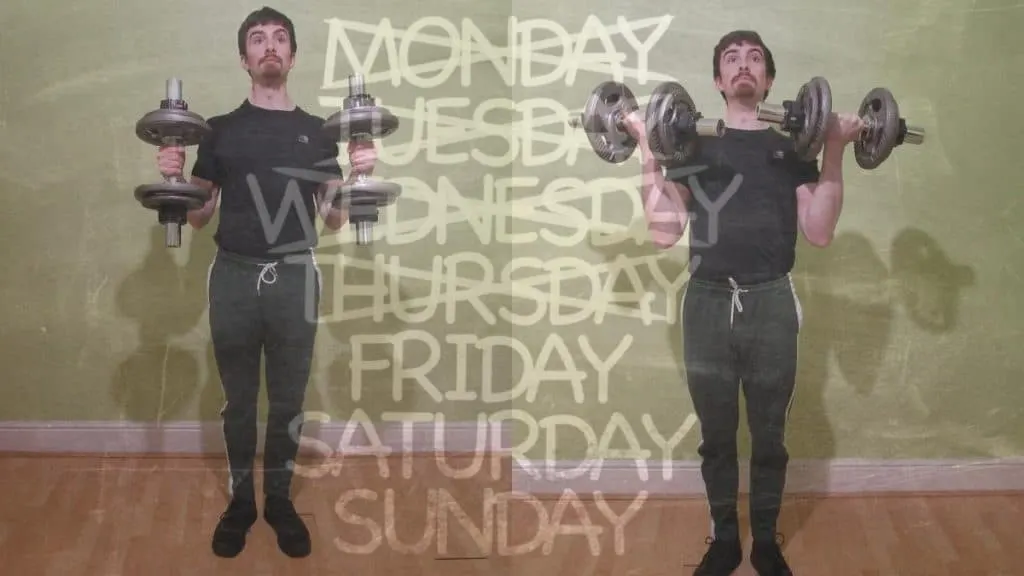
Even if I did 100 sets of bicep curls with perfect form, I’d probably get forearm tendonitis sooner or later, especially if I did it consistently.
More training volume only produces more muscle growth up to a point. And this point, as you might have guessed, is something that scientists have been debating for years and will likely continue to argue about for centuries.
But outside of the laboratory, more and more lifters realize that a few hard sets can produce remarkable hypertrophy. This is especially true for an exercise like biceps curls, where the target muscle is always going to the liming factor.
Admittedly, while more volume doesn’t always equal more growth, muscle tissue is very adept at handling high training volumes—joints, tendons, and ligaments, however, aren’t.
Plus, if you sprain a tendon, for example, then you’ll need to take time off lifting (or else the problem will worsen).
So if you care about making long term gains, then lift with more moderate training volumes so that you don’t fry your tendons and ligaments in the pursuit of short term hypertrophy.
Read more: forearm pain from fibromyalgia │forearm pain when gripping
Conclusion: Preventing forearm pain while curling in the future

We get so many people commenting saying things like, “my forearm hurts when I curl.” And invariably, when they take an honest look at their form (which can take a few attempts), they realize that their lifting technique is about as sound as a castle built on sand.
So, if you’ve got pain in your forearm when doing curls, you should always perfect your form before dismissing a particular curl variation as injurious.
I once had pain in my forearm when curling, and I’ll admit that barbell curls were particularly problematic because the exercise put the flexors under a lot of pressure.
Also, some people just expect curls to hurt their forearm before even trying the exercise, which could actually make the pain more psychological than physiological. [1]
When I switched over to dumbbells, however, I no longer got any forearm pain when curling. It completely went away. And it would have subsided even faster if I’d have just dropped the ego and rested up. My pain reduction could well have been due to the different positioning and muscle activation. [2]
Either way, I was just happy to get rid of it.
So whether you have inner forearm pain from bicep curls or discomfort on the outside, rest up, get it checked out if it persists, and then protect against future flare-ups by using good form.
References
- Macfarlane, G. J. (2000). Role of mechanical and psychosocial factors in the onset of forearm pain: prospective population based. BMJ, 321(7262), 676. https://doi.org/10.1136/bmj.321.7262.676
- Oliveira, L. F., Matta, T. T., Alves, D. S., Garcia, M. A. C., & Vieira, T. M. M. (2009). Effect of the shoulder position on the biceps brachii emg in different dumbbell curls. Journal of Sports Science and Medicine, 8(1), 24–29. https://www.ncbi.nlm.nih.gov/pmc/articles/PMC3737788/

